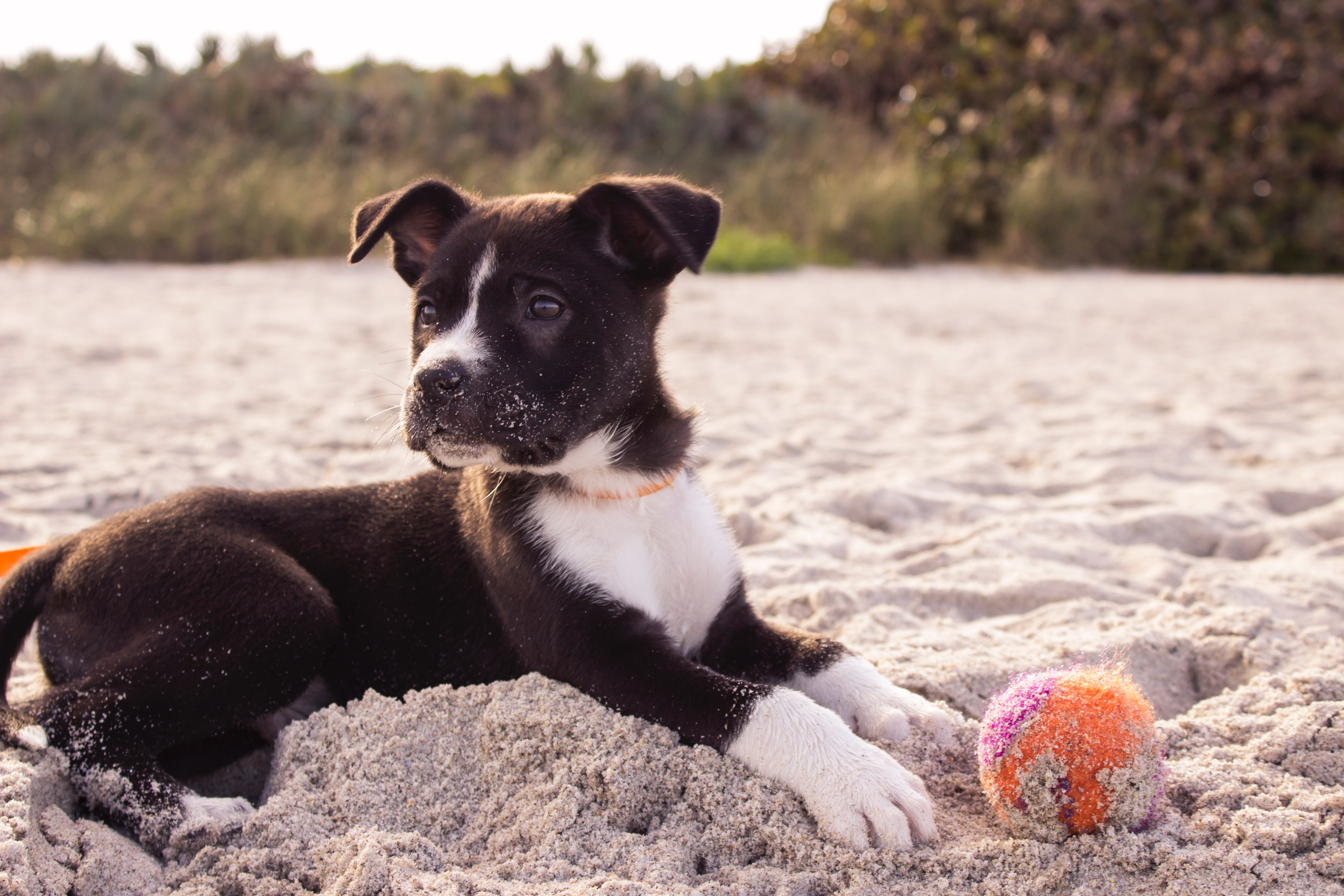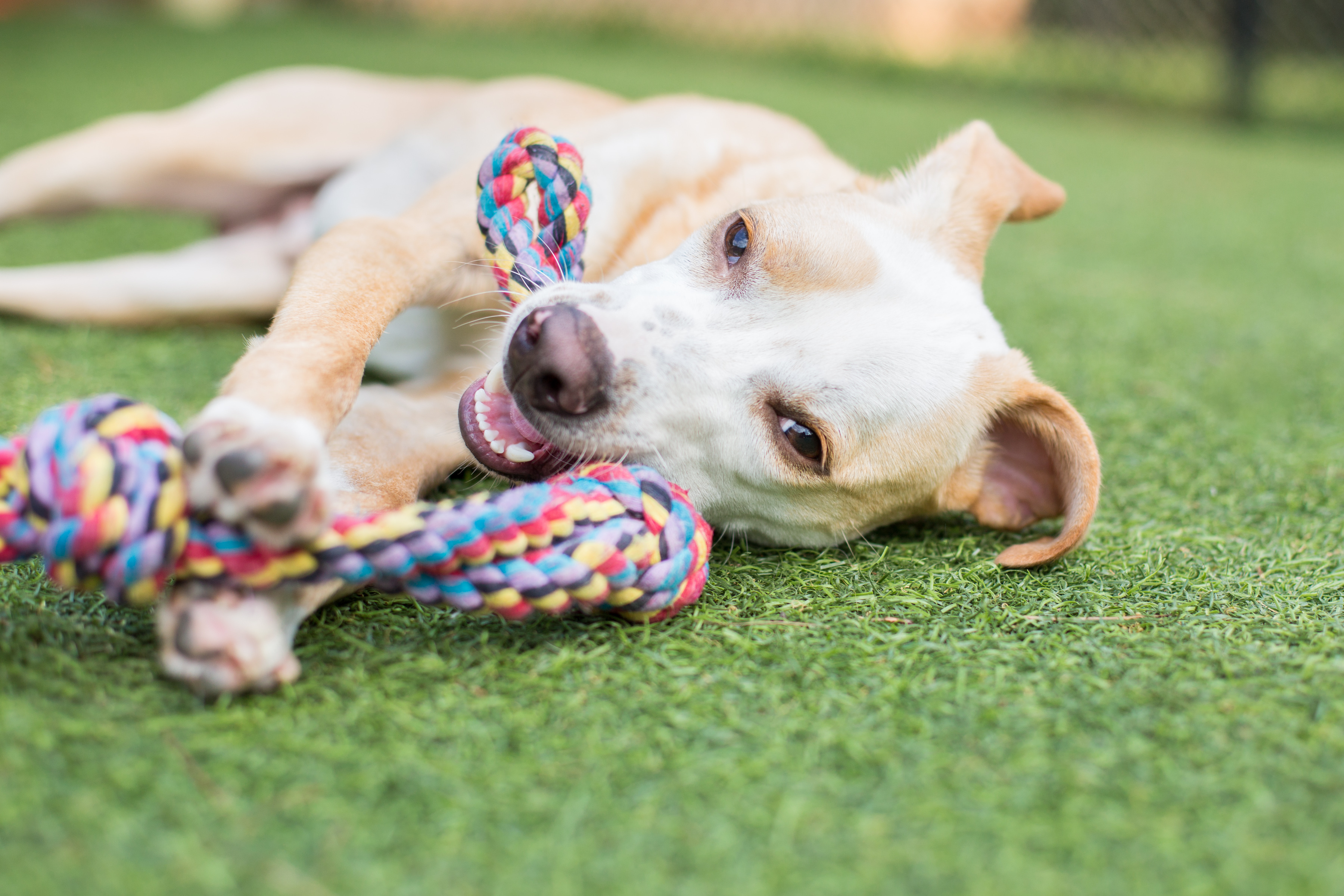Preventing Separation Anxiety in Dogs: Causes, Signs, & Tips

Separation anxiety is a common behavior issue for many dog owners. Recently adopted dogs and puppies are especially at risk of developing separation anxiety, as having you home with them is all they’ve ever known.
Our friends over at Embark recently spent some time with Margaret MacEwen, dog trainer and founder of Super Fine K9, to talk about what steps owners can take with their dogs now to prevent separation anxiety from developing.
What Causes Separation Anxiety in Dogs?
The leading cause behind separation anxiety in dogs can often be attributed to their deep attachment to their owners and the distress they experience when separated from them. However, recent studies have shed light on the critical role that lack of exercise and mental enrichment plays in the development of canine anxiety.
Dogs are inherently social animals, and when they do not receive adequate exercise and mental engagement, they can become more prone to anxiety-related behaviors. Breed traits and genetics also play a factor. For example noise sensitivity is highly pronounced in lagotto romagnolos.
Signs of Separation Anxiety in Dogs
- Drooling and panting more than usual: may occur in the car, after moving to a new home, or during visits to the vet or groomer.
- Frequent pacing: typically manifests when the dog is separated from their owner, but also visible when noise sensitive dogs hear fireworks or loud noises.
- Trying to escape: dig and chew marks near your doors and windows, damaged teeth or nails, and cuts or marks on your dog's front paws will indicate this trait.
- Excessive howling or barking: persistent barking that lacks any other obvious trigger and complaints from neighbors.
- Urinating or defecating after being potty trained: if caused by anxiety, this sign will only take place when the dog is separated from their owner - otherwise, your dog may have a non anxiety-related medical need.
- Destructive behaviors: damaged furniture or household items will be common if your dog exhibits this sign.
How to Avoid Dog Separation Anxiety with Crate Training
It may seem counterintuitive to put your dog in a crate when you’re around most of the day to watch over them, but MacEwen recommends crate training as a general rule and believes it’s especially useful right now., The idea is to give your pup opportunities to be alone and to get comfortable with being in their crate.
Make the crate a positive experience for your dog; you could give them a special toy only inside their crate, feed them their meals while the door is open, or even hide treats in the crate for your dog to find on their own. The more your dog associates their crate with a positive reward, the better.
Crate training while you’re home also lets you see how your dog reacts to their crate. If you go “cold turkey” and suddenly put your dog in a crate for a full workday without prior training, there’s no telling how they’ll respond. You want to build up to extended crate stays gradually and make sure your dog will be comfortable.
How to Avoid Dog Separation Anxiety with Socialization
MacEwen stresses the idea of expanding your dog’s world beyond your home, yard, and typical walking trail. Think about it: If all your dog knows is being home with you, how would you expect them to react when you’re away at work? You want them to be able to cope when they’re alone. A great way to accomplish this is to socialize your pup by exposing them to new places and things.

You probably walk your dog along the same route every day and meet plenty of new people and dogs then, but MacEwen suggests to go a step further and take your pooch for a car ride to a different neighborhood and walk them there. Show your dog that there’s more to the world than your current daily routine.
There’s an opportunity to work socializing your dog into errands, too. If you’re going to the store, bring another member of the household along with your dog. One of you can go in to handle groceries while the other walks the dog around the parking lot. You can park further from the entrance so you’re not wandering around in heavily-trafficked areas. It’ll be good for your dog to see and hear people, cars, and grocery carts.
You can also bring your dog with you to the pet store or even businesses like home supplies stores (just call ahead to see if they allow dogs inside).
Teaching Your Dog How to Be Alone
MacEwen suggests finding opportunities to let your dog be alone where appropriate. Don’t leave the house whenever you feel like it, but even something as small as checking the mail or taking a quick walk around the block will get your pup used to being in the house alone.
Having guests over will be another change of pace for your dog, so help your dog get used to new stimuli by knocking on the door or ringing the doorbell before you come back in. Getting your pooch comfortable with these signals for company is a good idea.
It’s great to be able to spend so much time around your dog, but it’s also important to keep up with training where you can. Raise your dog for the future, not just today. Taking steps to reduce separation anxiety now will help offset any unexpected behaviors when your dog has to be alone during the day.
If you want more advice on how to prevent separation anxiety in dogs or general training tips, you can reach out to Margaret MacEwen at superfinek9.com.

Preventing Separation Anxiety in Puppies
Create a Safe Space for the Puppy's Alone Time
Set up a comfortable, puppy-proofed area with their crate or a designated room. Ensure it's a positive and secure environment.
Build Positive Reinforcements with Independence
Gradually increase the time your puppy spends alone, starting with short intervals. Choose a reward that works for your dog such as treats, toys, or praise when they remain calm during these periods. This will help your puppy associate your departures with positive experiences.
Practice Separation in Small Bursts and Work Your Way Up
Begin with brief departures, even just a few minutes, and then gradually extend the time. This gradual approach helps the puppy become accustomed to being alone. Vary your departure routine. Sometimes leave without any fuss, and other times, quietly sneak out so your puppy doesn't associate specific actions with your departure.
Remain Calm
Set up a comfortable, puppy-proofed area with their crate or a designated room. Ensure it's a positive and secure environment.
By following these tips and being patient, you can help your puppy develop the independence and confidence needed to prevent separation anxiety, ensuring a happier and healthier relationship for both of you.
Raise Your Dog For the Future, Not Just Today
It’s great to be able to spend time with your dog, but it’s also important to keep up with training where you can. Taking steps to reduce separation anxiety now will help offset any unexpected behaviors when your dog has to be alone during the day.
If you want to help your dog socialize and practice being alone with easy containment at your fingertips, SpotOn’s wireless GPS fence can contain your dog in your backyard and on the go, with custom shape and instant perimeter fences.
Related Stories

Game of Throws: 9 Backyard Games that Reinforce your Dog's Skills
In this time of social distancing, we are all looking for fun things we can do at home...
Read More
Is Your Dog Ready for the Backyard Barbecue?
A BBQ brings with it quite a bit of excitement, lots of new people to greet and...
Read More
Class Canceled? Four Tips for Making the Most of Training at Home
Just because training programs may be closed doesn’t mean you need...
Read More